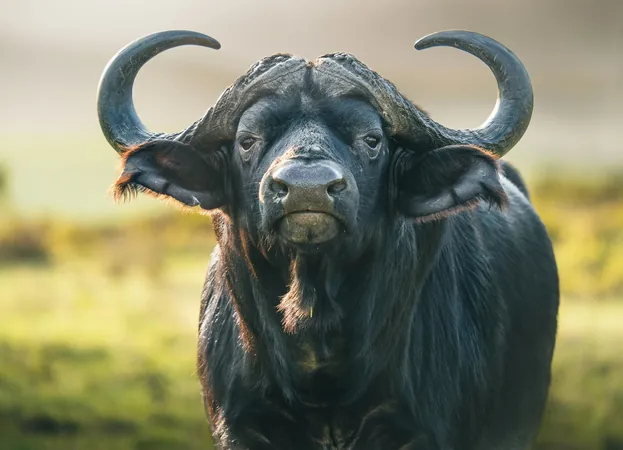
Are We Facing a Third Tipping Point? The Struggle of Herbivores Against Modern Perils
2025-06-13
Author: Nur
Ancient Giants: The Herbivores That Shaped Our World
Imagine a time when colossal mastodons, mighty rhinoceroses, and gigantic deer roamed the Earth, sculpting the landscapes for millions of years. A groundbreaking study led by Fernando Blanco from the University of Gothenburg delved into the fossil records of over 3,000 large herbivores, unraveling how these giants adapted and thrived amid drastic environmental changes.
Critical Climatic Shifts Over Millennia
Among the study's revelations was a stark realization: Earth's herbivore ecosystems have remained surprisingly stable for extended periods, even amidst significant upheaval. However, two monumental shifts transformed this balance drastically.
The first upheaval occurred around 21 million years ago, triggered when the ancient Tethys Sea closed, allowing elephants and various hoofed mammals to migrate from Africa into Eurasia. "The environmental pressure was so great that the entire system underwent global reorganization," Blanco remarked. This marked the advent of larger, high-crowned species taking dominance in herbivore communities.
Fast forward about ten million years, and a second transformation crept in silently with a changing climate favoring expansive grasslands. With the decline of forest-dwelling browsers, tougher-toothed grazers and mixed feeders began to flourish, solidifying a new functional reality among herbivores.
Ecosystem Resilience Through Time
As Ignacio A. Lazagabaster from Spain’s CENIEH explains, "It’s like a football team changing players but maintaining the same formation." Even as species like mastodons and mammoths went extinct in the past 129,000 years, their ecological functions persevered. The study's network models indicate that ecosystems maintained their structure despite these dramatic losses.
A Crisis of Speed: Biodiversity Loss Today
While ancient ecosystems shifted over millennia, today's biodiversity decline is occurring at an alarming pace, potentially approaching another irreversible tipping point. The decline of functional diversity started around ten million years ago coinciding with the rise of C4 grasses and shrinking forests, leading to a staggering loss of about 65 percent of global functional roles in just five million years.
The Disappearing Megaherbivores
Now, megaherbivores—those hefty beasts over a ton—have dwindled dramatically. Once a diverse group of proboscideans with as many as 33 species, only a few survive today. Although their extinction reduces ecosystem richness, the overall system's structure remains intact. However, Juan L. Cantalapiedra from Spain’s MNCN warns, "We may soon reach a third global tipping point, one that we’re helping to accelerate."
Understanding the Past to Protect the Future
The fossil record serves as a vital window into ecological resilience, showcasing how herbivores adapted over time. The findings suggest that even with significant species losses, their ecological roles can persist through new entrants—an ability that has helped maintain stability for 60 million years.
Taking Action: The Need to Protect Herbivores
While ancient ecosystems evolved over millions of years, human-driven changes threaten biodiversity on a century scale. The research emphasizes the necessity of not only preserving herbivore populations but also their functional diversity. With current declines continuing, the risk of a shift beyond recovery looms large.
Conserving and restoring large herbivores could be pivotal in ensuring the resilience of ecosystems in the face of ongoing changes. The outcomes of this study, published in Nature Communications, underscore a critical question: Can we safeguard the roles that these ancient giants once played in our world?



 Brasil (PT)
Brasil (PT)
 Canada (EN)
Canada (EN)
 Chile (ES)
Chile (ES)
 Česko (CS)
Česko (CS)
 대한민국 (KO)
대한민국 (KO)
 España (ES)
España (ES)
 France (FR)
France (FR)
 Hong Kong (EN)
Hong Kong (EN)
 Italia (IT)
Italia (IT)
 日本 (JA)
日本 (JA)
 Magyarország (HU)
Magyarország (HU)
 Norge (NO)
Norge (NO)
 Polska (PL)
Polska (PL)
 Schweiz (DE)
Schweiz (DE)
 Singapore (EN)
Singapore (EN)
 Sverige (SV)
Sverige (SV)
 Suomi (FI)
Suomi (FI)
 Türkiye (TR)
Türkiye (TR)
 الإمارات العربية المتحدة (AR)
الإمارات العربية المتحدة (AR)